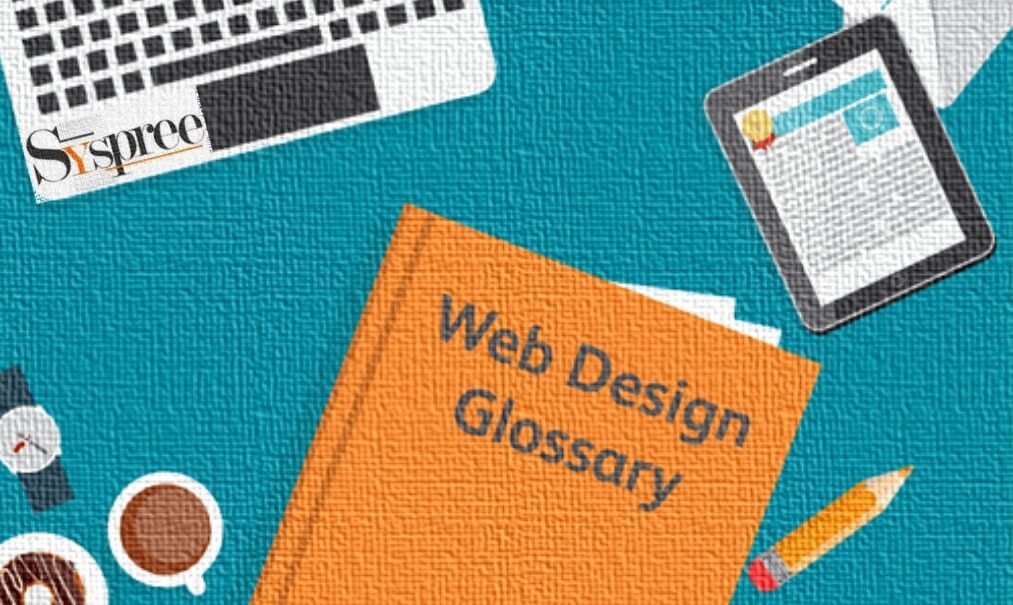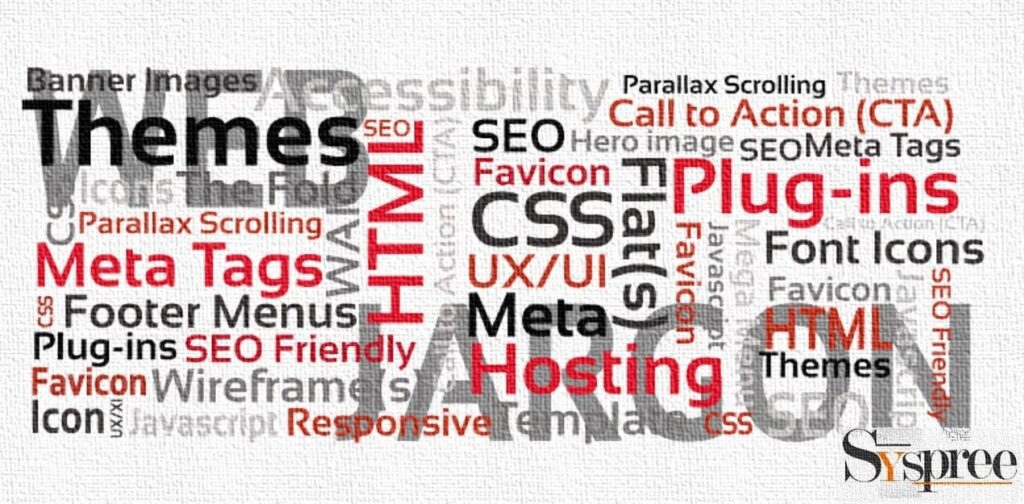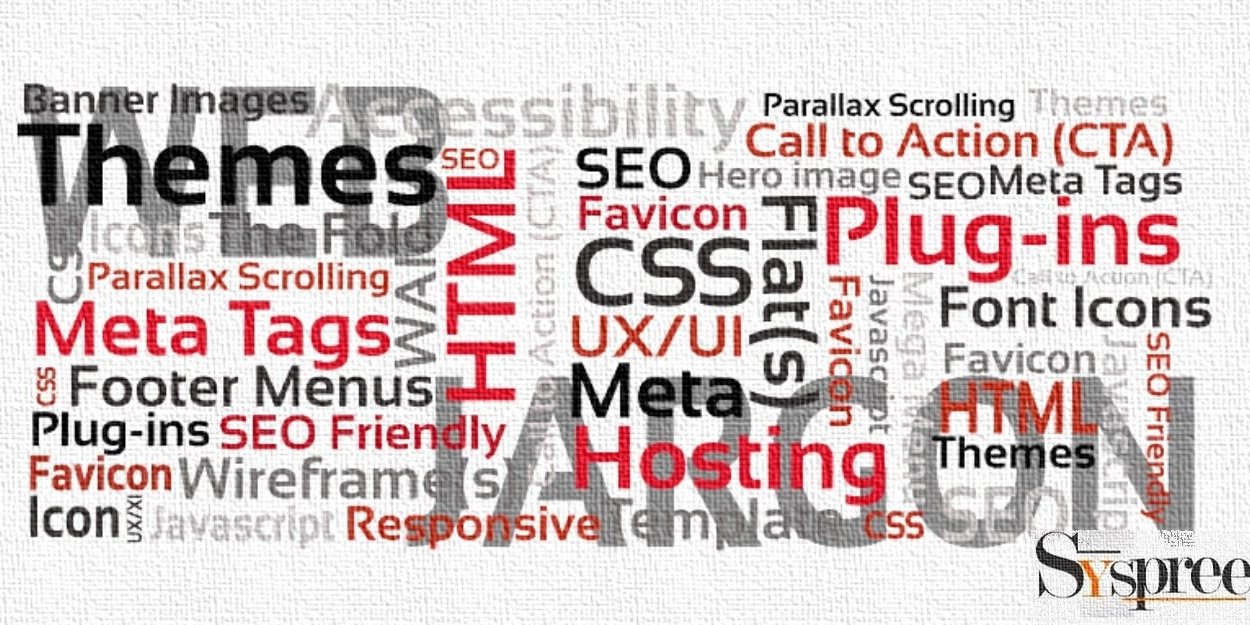A simple business practice at SySpree a leading Web Designing Company in Mumbai has been to put ourselves in our client’s shoes. Here’s one for the startups a fresh entrepreneur we work with. This story is of a young lady who decided to put on her entrepreneur’s hat resulting in a small venture rolling out services which she was a specialist at .she had the skills but how does she get her customers, Oh well, take up a store but that means money and the moolah was never there. So probably the online route was the Launchpad for now. And already the first obstacle is here after all this world is so full of jargon.
Talk about domains, hosting, Scripting, Moq ups, UI, UX, etc Would someone want to keep decoding rather than focusing on the core stuff i.e. setting up the business. Time for the specialists to help you. This blog is meant to decode some jargon for beginners.

Website: We start with the easiest one – website – In the right words, this is your house or your property or your office/shop on the internet. Here is where you welcome guests, potential customers, existing customers, friends, and fans, etc for various purposes. Some variations of websites are called differently eg. Web portals. These in their basic form could be described as web pages that are specially designed to give access to multiple sources of information in a structured way. Websites are also referred to as web portals as the complexity of the functionality and features on the site increase. But don’t be surprised if websites are called web portals interchangeably either out of ignorance or to create a cool perception.
Domain name: Every home has an address and this is precisely what a domain name is to your website. It is how your visitors will find you on the web. The only difference here is that you need to have a domain name before the website is built, unlike a home where you have the flexibility of building it even after you have built it. An alternate strategy is to build websites or portals offline, test them, ready them, and then book your domain ie. If no one else has taken it already
Hosting: Some land is required for a house to be built. So it is for a website – the word here is hosting. And the hosting service providers could be compared to the property developers who sell you or rather lease you some space on the internet to build your home. And the folks who build the home for you are the web developers most often called web designers. These could be individuals or organizations one of them being us SySpree – A Web Designing Company in Mumbai.
Now that you start wondering, concepts such as Navigation, UI, and UX come into play. Let’s take a look at the view of a top Web Designing Company in Mumbai:
Navigation: It is how you cruise through the site, This could require predefined scrolls, clicks, and some jazz. It is not a vanilla document after all. No, we reach a portion of the blog which is slightly confusing and we’ll put in more effort to explain.
User Interface: UI is the User Interface, while UX is User Experience. User Experience refers to the functionality, usability, the interaction between the user and the website. User Interface design is the look, feel presentation, and interactivity of the website. It is a process of visually guiding a user through the interface of the website across all platforms.
User Experience: This includes aspects such as content, the supporting systems, the structure of the website, and its design. Therefore, it includes User Interface but is not limited to it. The main role of a UI designer is related to the graphic/visual aspect of a webpage. The main role of a UX designer is related to the technical background of the page that is not visible to the user but experienced. Assume that a webpage is like a human body. Here, the organs that keep the life systems running would be the UX, whereas the cosmetic appeal and outward interaction are the UI.

SEO: SEO is an abbreviation for Search Engine Optimization. It plays an important role which is performed by an SEO company when it comes to building a website. SEO is a way of increasing the visibility of your webpage on SERP(Search Engine Result Page). It includes applying various useful techniques to increase the quantity and quality of your website. Its ambit covers more of unpaid search placements rather than a paid one.
HTML: HTML or Hypertext Markup Language is a standard language used to create documents that one would want to be displayed on the web browser (example: Opera). It is the most widely used language when it comes to building websites not only by a Web Designing Company in Mumbai but others too. It can be embedded with other technologies and languages such as CSS, Angular, etc. to add more functionalities to your webpage.
CSS: CSS stands for Cascading Style Sheets. It is a widely used technology that is used to enhance your website. Where HTML is used to create the basic structure of your website, it limits the user from formatting certain aspects of the website. This is when CSS is used. Based on where you add these style sheets, CSS can be differentiated into 3 different types: Internal, External, and Inline.
Parallax Scrolling: One of the most interesting ways of styling your website would be by using Parallax Scrolling. It is an effect where the background image moves at a different speed than the content which is present in the foreground. It has become a very popular trend recently in the web designing sector as it creates a faux 3D effect, giving users a unique browsing experience.
Javascript: Also known as JS, javascript is a high-level programming language. It is a majorly used language to build webpages and gives developers the power to provide users with enhanced user experience. Js not only can be used as a scripting language for websites but is also used with various non-browser environments such as Adobe Acrobat, Node.js, etc.
Favicon: Favicons are small icons that appear on the left-side corner of the address bar on your website. It typically represents the logo of your organization or business and has very small dimensions i.e 16 x 16 pixels. These can be created using open source editors like GIMP or a paid one like Photoshop. Favicons help users recognize your website which further helps influence your brand.
Meta Tags: These are small snippets of texts that are used to describe the content of your web page, however, they do not appear on your website itself. They are HTML tags that are used to include metadata within the header of your web page.
Plug-in: A plug-in is a third party code that can be used to extend the capabilities and functionalities of your website without redoing the core coding of your site. It is most commonly used in conjunction with a blogging site or a Content Management System(CMS).
RSS: RSS is an abbreviation for Really Simple Syndication. As a leading Web Designing Company in Mumbai, Syspree also focuses on Blogs as a resource of our website. This is where RSS comes to light, where it allows the content of a blog to be syndicated from one site to another. It is a standardized XML format and also provides the advantage of allowing visitors to subscribe to a blog.
Guess this should be a good start for many who start researching on how to start a website. We assure you to go into further depth in our future blogs such as What is Digital Marketing? or The 4Ps of Digital Marketing.








I have time then I read your blog. and last I read your blog about Exaggerated Use of space for web development and that was I really liked that and today read this blog but I want to know about the node.js framework in detail so If you have knowledge about then please share information with me also any reference regarding this then please share with me and keep sharing more post like this.
Hi, thank you for your kind feedback on our blog. Feel free to check out our latest blog featuring ON-PAGE SEO VS OFF-PAGE SEO VS TECHNICAL SEO.